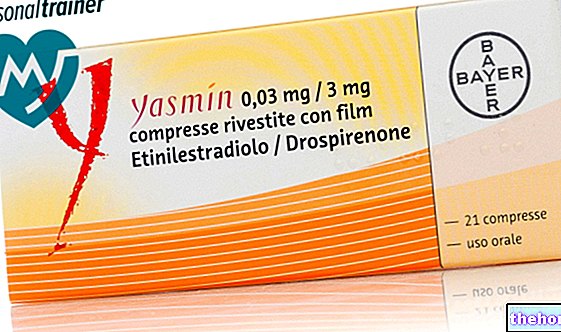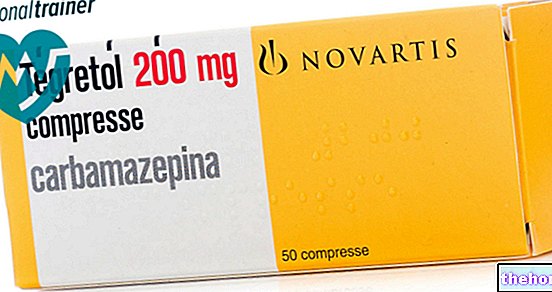Active ingredients: Acetylsalicylic acid, Ascorbic acid
VIVIN C 330 mg + 200 mg effervescent tablets
Why is Vivin C used? What is it for?
WHAT IS IT
VIVIN C is a pain reliever, antifebrile.
WHY IT IS USED
VIVIN C is used for:
Headache and toothache, neuralgia, menstrual pain, rheumatic and muscle pain.
Symptomatic therapy of feverish states and flu and cold syndromes.
Contraindications When Vivin C should not be used
The product should not be used in patients with a history of gastrointestinal bleeding or perforation related to previous active treatments or with a history of recurrent peptic ulcer / haemorrhage (two or more distinct episodes of proven ulceration or bleeding).
Established tendency to haemorrhages, gastropathies (eg gastro-duodenal ulcer), asthma.
The product should not be administered to patients with severe heart failure.
Hypersensitivity to the active substances, to salicylates or to any of the excipients In children and adolescents under the age of 16.
Pregnancy and breastfeeding: (see What to do during pregnancy and breastfeeding)
Precautions for use What you need to know before you take Vivin C
In the case of a sodium-free or low-sodium regimen, it should be borne in mind that each tablet of the product contains about 480 mg of sodium.
The product should be used with caution in patients taking concomitant medications that may increase the risk of ulceration or bleeding (oral corticosteroids, anticoagulants such as warfarin, selective serotonin reuptake inhibitors or antiplatelet agents such as aspirin) (see "Which medicines or foods can change the "effect of the medicine").
Non-steroidal anti-inflammatory drugs (NSAIDs) such as VIVIN C should be administered with caution to patients with a history of gastrointestinal disease (ulcerative colitis, Crohn's disease) as these conditions may be exacerbated (see "Undesirable effects").
Caution should be exercised in patients with a history of hypertension and / or heart failure as fluid retention and edema have been reported in association with NSAID therapy.
Interactions Which drugs or foods can modify the effect of Vivin C
Tell your doctor or pharmacist if you are taking or have recently taken any other medicines, even those without a prescription.
Do not use VIVIN C if you are following a therapy based on anticoagulants (e.g. coumarin derivatives and heparin), methotrexate, corticosteroids, non-steroidal anti-inflammatory drugs, blood sugar lowering drugs (oral hypoglycemic agents e.g. sulphonylurea), spironolactone, furosemide and preparations antigout: Corticosteroids may increase the risk of gastrointestinal ulceration or bleeding. Antiplatelet drugs, such as aspirin or ticlopidine, and selective serotonin reuptake inhibitors may increase the risk of gastrointestinal bleeding. The effects of anticoagulant drugs such as warfarin or heparin may be increased by acetylsalicylic acid (see "Precautions" for "use").
Warnings It is important to know that:
The use of Vivin C is contraindicated in children and adolescents under the age of 16 (see "When it should not be used"). Cases of Reye's Syndrome have been observed in children with viral infections (particularly chickenpox and conditions). flu-like) and treated with acetylsalicylic acid. Reye's syndrome manifests itself with persistent vomiting and signs of progressive damage to the central nervous system (numbness, up to the onset of generalized convulsions and coma), signs of liver injury and hypoglycemia. in which these symptoms arise in the days following a flu episode (or flu-like or chickenpox or other virosis) during which a product based on acetylsalicylic acid has been administered, it is necessary to inform the doctor immediately.
In patients over 70 years of age, especially in the presence of concomitant therapies, VIVIN C should only be used after consultation with your doctor.
The use of VIVIN C should be avoided in conjunction with anti-inflammatories (NSAIDs, including selective COX-2 inhibitors).
Undesirable effects can be minimized by using the lowest effective dose for the shortest possible duration of treatment needed to control symptoms.
Elderly patients have an increased frequency of adverse reactions to NSAIDs, especially gastrointestinal bleeding and perforation, which can be fatal (see "How to use this medicine").
Gastrointestinal bleeding, ulceration and perforation which can be fatal have been reported during treatment with all NSAIDs at any time, with or without warning symptoms or a previous history of serious gastrointestinal events.
In the elderly and in patients with a history of ulcer, particularly if complicated with haemorrhage or perforation (see "When it should not be used"), the risk of gastrointestinal bleeding, ulceration or perforation is higher with increased doses of NSAIDs. These patients should start treatment with the lowest available dose. It is possible that the doctor may prescribe concomitant treatment with gastroprotective drugs for these patients and also for patients taking low doses of aspirin or other drugs that may increase the risk of gastrointestinal events (see below and "Which medicines or foods can modify the effect" of the medicinal product ").
Patients with previous episodes of gastrointestinal toxicity, particularly the elderly, should report any unusual gastrointestinal symptoms (especially gastrointestinal bleeding) particularly in the initial stages of treatment.
When gastrointestinal bleeding or ulceration occurs in patients taking VIVIN C the treatment should be discontinued.
Serious skin reactions, some of them fatal (exfoliative dermatitis, Stevens-Johnson syndrome and toxic epidermal necrolysis) have been reported very rarely with the use of NSAIDs (see "Undesirable effects"). The onset of the reaction occurs in most cases. of cases within the first month of treatment, so in the early stages of therapy patients appear to be at higher risk. VIVIN C should be discontinued at the first appearance of skin rash, mucosal lesions or any other signs of hypersensitivity.
In patients with glucose-6-phosphate dehydrogenase deficiency, chronic or recurrent gastric and intestinal disorders or impaired renal function, VIVIN C should only be used after consulting your doctor and evaluating with him the risk / benefit ratio in your case.
When it can be used only after consulting your doctor
Patients over 70 years of age, especially in the presence of concomitant therapies (see "It is important to know that:").
Deficiency of glucose-6-phosphate-dehydrogenase, chronic or recurrent gastric and intestinal disorders or impaired renal function (see "It is important to know that:")
It is also advisable to consult your doctor in cases where these disorders have occurred in the past.
What to do during pregnancy and breastfeeding
VIVIN C should not be used during pregnancy and lactation. Use should also be avoided if you suspect pregnancy or plan to maternity leave.
Effects on ability to drive and use machines
Not relevant.
Dose, Method and Time of Administration How to use Vivin C: Posology
How many
Adults: 1-2 tablets if necessary up to 3-4 times a day.
Elderly patients should adhere to the minimum dosages indicated above.
Warning: do not exceed the indicated doses without medical advice.
When and for how long
The product must be taken on a full stomach.
Consult your doctor if the disorder occurs repeatedly or if you have noticed any recent changes in its characteristics.
Do not use for more than three days at the maximum dose or do not exceed 5-7 days of continuous use.
Warning: use only for short periods of treatment.
Like
Dissolve 1 or 2 VIVIN C tablets in half a glass of still water.
Overdose What to do if you have taken too much Vivin C
In case of overdose it is necessary to limit the absorption of the drug from the gastrointestinal tract (gastric lavage, activated charcoal), to lower the body temperature (sponging with warm water), to compensate for dehydration with an adequate supply of fluids, to correct the acidosis (bicarbonate of sodium iv) and possible hypoglycemia. Even in the case of accidental intoxication by VIVIN C, the effervescent form presents a maximum degree of safety both for the reduction of the risk of a massive administration and for the need to ingest large quantities of water.
In case of accidental ingestion / intake of an excessive dose of VIVIN C, notify your doctor immediately or go to the nearest hospital.
Side Effects What are the side effects of Vivin C.
Like all medicines, this can cause side effects, although not everybody gets them.
The most commonly observed adverse events are gastrointestinal in nature. Nausea, vomiting, diarrhea, flatulence (excess gas in the intestine), constipation (constipation), dyspepsia (digestive disorders), abdominal pain, ulcerative stomatitis (erosions of the mucous membrane of the mouth), exacerbation have been reported following administration of VIVIN C of colitis and Crohn's disease (see "It is important to know that").
Peptic ulcers, perforation or gastrointestinal haemorrhage, sometimes fatal, may occur, which may manifest as haematemesis (blood vomiting) or melaena (dark stools due to the presence of blood) or be occult and cause iron deficiency anemia (reduction in the number of red blood cells due to iron deficiency). Such bleeding is more frequent with increasing dosage, particularly in the elderly (see "It is important to know that"). Gastritis has been observed less frequently.
Edema, hypertension and heart failure have been reported in association with NSAID treatment.
Bullous skin reactions (Stevens-Johnson syndrome, toxic epidermal necrolysis) Haemorrhagic syndromes such as epistaxis (nosebleeds), gingival haemorrhages, thrombocytopenia (reduction in blood platelets), purpura (small subcutaneous haemorrhages) with increased bleeding time. This effect persists for 4-8 days after stopping the administration of acetylsalicylic acid. It causes bleeding risk in patients undergoing surgery.
High doses of vitamin C (> 1 g) can increase haemolysis (breakdown of red blood cells) in patients with G6PD-dehydrogenase deficiency.
Hypersensitivity reactions, such as angioedema / Quincke's edema (swelling of large areas of the face and mucous membranes of the oral cavity which can also affect the respiratory and gastrointestinal tract), urticaria, erythema, asthma and anaphylactic reactions.
Ringing in the ears, feeling of reduced hearing and headache (usually a sign of overdose).
Delay in childbirth.
High doses of vitamin C (> 1 gram) can promote the formation of oxalate and uric acid stones in some individuals.
In case of undesirable effects not described in the package leaflet, consult your doctor or pharmacist.
Compliance with the instructions contained in the package leaflet reduces the risk of undesirable effects.
These side effects are usually transient. However, when they occur, it is advisable to consult your doctor or pharmacist.
It is important to inform your doctor or pharmacist of any undesirable effects not described in the package leaflet.
Request and fill in the Undesirable Effects report form available at the pharmacy (form B).
Expiry and Retention
Do not store above 25 ° C.
Keep the tube tightly closed to protect the medicine from moisture.
Expiry: see the expiry date printed on the package.
The expiry date refers to the product in intact packaging, correctly stored.
Warning: do not use the medicine after the expiry date indicated on the package.
Keep this medicine out of the reach and sight of children.
It is important to always have the information about the medicine available, so keep both the box and the package leaflet.
Medicines should not be disposed of via wastewater or household waste. Ask your pharmacist how to throw away medicines you no longer use. This will help protect the environment.
Composition and pharmaceutical form
COMPOSITION
Each tablet contains:
Active ingredients: acetylsalicylic acid 0.330 g, ascorbic acid 0.200 g.
Excipients: glycine, anhydrous citric acid, sodium hydrogencarbonate, sodium benzoate.
HOW IT LOOKS
VIVIN C comes in the form of an effervescent tablet.
The contents of the pack are 10 or 20 tablets.
Source Package Leaflet: AIFA (Italian Medicines Agency). Content published in January 2016. The information present may not be up-to-date.
To have access to the most up-to-date version, it is advisable to access the AIFA (Italian Medicines Agency) website. Disclaimer and useful information.
01.0 NAME OF THE MEDICINAL PRODUCT
VIVIN C 330 MG + 200 MG EFFERVESCENT TABLETS
02.0 QUALITATIVE AND QUANTITATIVE COMPOSITION
Each tablet contains:
Active ingredients: acetylsalicylic acid 0.330 g, ascorbic acid 0.200 g.
For the full list of excipients, see section 6.1
03.0 PHARMACEUTICAL FORM
Effervescent tablet.
04.0 CLINICAL INFORMATION
04.1 Therapeutic indications
Headache and toothache, neuralgia, menstrual pain, rheumatic and muscle pain.
Symptomatic therapy of feverish states and flu and cold syndromes.
04.2 Posology and method of administration
Adults: 1-2 tablets if necessary up to 3-4 times a day.
Dissolve one or two VIVIN C tablets in half a glass of still water.
The product must be taken on a full stomach.
Do not exceed the recommended doses: in particular elderly patients should follow the minimum dosages indicated above.
04.3 Contraindications
Hypersensitivity to the active ingredients, to salicylates or to any of the excipients, known tendency to bleeding, gastropathies (eg gastro-duodenal ulcer), asthma.
History of gastrointestinal bleeding or perforation related to previous active treatments or history of recurrent peptic ulcer / haemorrhage (two or more distinct episodes of proven ulceration or bleeding).
Severe heart failure.
The use of this medicine is contraindicated in children and young people under the age of 16.
Dose> 100 mg / day during the third trimester of pregnancy
04.4 Special warnings and appropriate precautions for use
This medicinal product should not be used in children and young people under the age of 16 (see section 4.3).
Cases of Reye's syndrome have been observed in children with viral infections (particularly chicken pox and flu-like conditions) and treated with acetylsalicylic acid. Reye's syndrome is manifested by persistent vomiting and signs of progressive damage to the central nervous system (numbness, leading to generalized convulsions and coma), signs of liver injury and hypoglycemia.
People over 70 years of age, especially in the presence of concomitant therapies, should use this medicine only after consulting a doctor.
After three days of use at the maximum dose or after 5-7 days of continuous use, consult your doctor.
It is advisable that patients with glucose-6-phosphate-dehydrogenase deficiency, chronic or recurrent gastric and intestinal disorders or impaired renal function be consulted with the doctor.
In the case of a sodium-free or low-sodium regimen, it should be borne in mind that each tablet of the product contains about 480 mg of sodium.
The use of VIVIN C should be avoided concomitantly with NSAIDs, including selective COX-2 inhibitors.
Undesirable effects can be minimized by using the lowest effective dose for the shortest possible duration of treatment needed to control symptoms.
Elderly: Elderly patients have an increased frequency of adverse reactions to NSAIDs, especially gastrointestinal bleeding and perforation, which can be fatal (see section 4.2).
Gastrointestinal bleeding, ulceration and perforation: Gastrointestinal bleeding, ulceration and perforation, which can be fatal, have been reported during treatment with all NSAIDs, at any time, with or without warning symptoms or a previous history of serious gastrointestinal events.
In the elderly and in patients with a history of ulcer, particularly if complicated with haemorrhage or perforation (see section 4.3), the risk of gastrointestinal bleeding, ulceration or perforation is higher with increasing doses of NSAIDs. These patients should start treatment with the lowest available dose. Concomitant use of protective agents (misoprostol or proton pump inhibitors) should be considered for these patients and also for patients taking low dose aspirin or other drugs that may increase the risk of gastrointestinal events (see below and section 4.5).
Patients with a history of gastrointestinal toxicity, particularly the elderly, should report any unusual gastrointestinal symptoms (especially gastrointestinal bleeding) particularly in the initial stages of treatment.
Caution should be exercised in patients taking concomitant medications that may increase the risk of ulceration or bleeding, such as oral corticosteroids, anticoagulants such as warfarin, selective serotonin reuptake inhibitors or antiplatelet agents such as aspirin (see section 4.5).
When gastrointestinal bleeding or ulceration occurs in patients taking VIVIN C the treatment should be discontinued.
NSAIDs should be administered with caution to patients with a history of gastrointestinal disease (ulcerative colitis, Crohn's disease) as these conditions may be exacerbated (see section 4.8).
Caution should be exercised in patients with a history of hypertension and / or heart failure as fluid retention and edema have been reported in association with NSAID therapy.
Serious skin reactions, some of them fatal, including exfoliative dermatitis, Stevens-Johnson syndrome and toxic epidermal necrolysis, have been reported very rarely in association with the use of NSAIDs (see section 4.8). In the early stages of therapy, patients appear to be at higher risk: the onset of the reaction occurs in most cases within the first month of treatment. VIVIN C should be discontinued at the first appearance of skin rash, mucosal lesions or any other signs of hypersensitivity.
04.5 Interactions with other medicinal products and other forms of interaction
Corticosteroids: increased risk of gastrointestinal ulceration or bleeding (see section 4.4).
Anticoagulants: NSAIDs may enhance the effects of anticoagulants, such as warfarin (see section 4.4).
Antiplatelet agents and selective serotonin reuptake inhibitors (SSRIs): increased risk of gastrointestinal bleeding (see section 4.4).
The administration of acetylsalicylic acid, especially in the case of prolonged therapy, can potentiate the undesirable effects of methotrexate, the effects and secondary manifestations of all non-steroidal antirheumatics, the effect of blood glucose lowering drugs (sulphonylurea).
Precaution should be observed for substances such as spironolactone, furosemide and antigout preparations, whose activity is instead reduced by acetylsalicylic acid.
Therefore, unless otherwise prescribed, VIVIN C should not be administered concomitantly with the above preparations.
04.6 Pregnancy and breastfeeding
- Low doses (up to 100 mg / day)
Clinical studies indicate that doses up to 100 mg / day can be considered safe for use only in obstetrics, which requires specialist monitoring.
- Doses of 100-500 mg / day
There are insufficient clinical data on the use of doses above 100 mg / day up to 500 mg / day.
Therefore, the recommendations below for doses of 500 mg / day and above also apply to this dose range.
- Doses of 500 mg / day and more
Inhibition of prostaglandin synthesis can adversely affect pregnancy and / or embryo / fetal development.
Results of epidemiological studies suggest an increased risk of miscarriage and cardiac malformation and gastroschisis after use of a prostaglandin synthesis inhibitor in early pregnancy. The absolute risk of cardiac malformations was increased from less than 1% to approximately 1.5%. The risk has been estimated to increase with dose and duration of therapy. In animals, administration of prostaglandin synthesis inhibitors has been shown to cause increased pre- and post-implantation loss and of embryo-fetal mortality.
In addition, an increased incidence of various malformations, including cardiovascular, has been reported in animals given prostaglandin synthesis inhibitors during the organogenetic period.
During the first and second trimester of pregnancy, acetylsalicylic acid should not be administered except in strictly necessary cases.
If acetylsalicylic acid is used by a woman attempting to conceive, or during the first and second trimester of pregnancy, the dose and duration of treatment should be kept as low as possible.
During the third trimester of pregnancy, all prostaglandin synthesis inhibitors can expose
The fetus to:
• cardiopulmonary toxicity (with premature closure of the arterial duct and pulmonary hypertension);
• renal dysfunction, which can progress to renal failure with oligo-hydroamnios
The mother and the newborn, at the end of pregnancy, to:
• possible prolongation of bleeding time and antiplatelet effect which may occur even at very low doses;
• inhibition of uterine contractions resulting in delayed or prolonged labor.
Consequently, acetylsalicylic acid at doses> 100 mg / day is contraindicated during the third trimester of pregnancy.
04.7 Effects on ability to drive and use machines
Not relevant.
04.8 Undesirable effects
Gastrointestinal disorders
The most commonly observed adverse events are gastrointestinal in nature.
Following administration of VIVIN C the following have been reported:
• nausea, vomiting, diarrhea, flatulence, constipation, dyspepsia, abdominal pain, ulcerative stomatitis, exacerbation of colitis and Crohn's disease (see section 4.4).
• peptic ulcer, even perforated
• Gastrointestinal bleeding, which can be manifest (haematemesis, melaena) and sometimes fatal, or occult and cause iron deficiency anemia. Such bleeding is more frequent with increasing dosage, particularly in elderly patients (see section 4.4).
• Gastritis has been observed less frequently.
Cardiac pathologies
• Edema, hypertension and heart failure have been reported in association with NSAID treatment.
Skin and subcutaneous tissue disorders
• Bullous reactions including Stevens-Johnson syndrome and toxic epidermal necrolysis.
Disorders of the blood and lymphatic system
• Bleeding syndromes (epistaxis, gingival bleeding, thrombocytopenia, purpura) with increased bleeding time. This effect persists for 4-8 days after stopping the administration of acetylsalicylic acid. It causes bleeding risk in patients undergoing surgery.
• High doses of vitamin C (> 1g) may increase hemolysis in patients with G6PD-dehydrogenase deficiency in the form of chronic hemolysis
Disorders of the immune system
• Hypersensitivity reactions: angioedema, Quincke's edema, urticaria, erythema, asthma, anaphylactic reactions.
Nervous system disorders
• Ear buzz
• Feeling of reduced hearing
• Headache, usually a sign of overdose
Pregnancy, puerperium and perinatal conditions
• Delay in childbirth
Renal and urinary disorders
• High doses of vitamin C (> 1g) can promote the formation of oxalate and uric acid stones in some individuals.
04.9 Overdose
In case of overdose it is necessary to limit the absorption of the drug from the gastrointestinal tract (gastric lavage, activated charcoal), to lower the body temperature (sponging with warm water), to compensate for dehydration with an adequate supply of fluids, to correct the acidosis (bicarbonate of sodium iv) and possible hypoglycemia. Even in the case of accidental intoxication by VIVIN C the effervescent form presents a maximum degree of safety both for the reduction of the risk of a massive administration and for the need to ingest large quantities of water.
05.0 PHARMACOLOGICAL PROPERTIES
05.1 Pharmacodynamic properties
Pharmacotherapeutic group: other analgesics and antipyretics - salicylic acid and derivatives
ATC code: N02BA51
It is a preparation for oral use containing in stable association with effervescent acetylsalicylic acid and ascorbic acid; it therefore summarizes the therapeutic properties of acetylsalicylic acid (anti-inflammatory, antipyretic and pain reliever) and those of vitamin C.
05.2 Pharmacokinetic properties
The determination of the maximum plasma concentrations of acetylsalicylic acid after administration of an effervescent tablet of VIVIN C shows a plasma rate double compared to a conventional tablet; in particular, after administration of an effervescent tablet of VIVIN C (330 mg), the same plasma concentrations were found compared to a conventional 500 mg tablet.
05.3 Preclinical safety data
The LD50 in rabbits and dogs is around 1,500 mg / kg.
06.0 PHARMACEUTICAL INFORMATION
06.1 Excipients
glycine, anhydrous citric acid, sodium hydrogencarbonate, sodium benzoate.
06.2 Incompatibility
Not relevant.
06.3 Period of validity
42 months.
06.4 Special precautions for storage
Do not store above 25 ° C.
Keep the tube tightly closed to protect the medicine from moisture.
06.5 Nature of the immediate packaging and contents of the package
Polypropylene tube with polythene cap with desiccant.
Pack of 10 effervescent tablets.
Pack of 20 effervescent tablets.
06.6 Instructions for use and handling
No special instructions.
07.0 MARKETING AUTHORIZATION HOLDER
UPSA SAS - Rueil Malmaison (France).
Exclusive dealer for Italy: A. Menarini Industrie Farmaceutiche Riunite s.r.l., via Sette Santi, 3 - Florence.
08.0 MARKETING AUTHORIZATION NUMBER
10 tablets A.I.C. n. 020096018.
20 tablets A.I.C. n. 020096020.
09.0 DATE OF FIRST AUTHORIZATION OR RENEWAL OF THE AUTHORIZATION
Date of first authorization:
VIVIN C 10 effervescent tablets : December 19, 1972
VIVIN C 20 effervescent tablets: October 3, 1973
Date of last renewal: May 31, 2010.
10.0 DATE OF REVISION OF THE TEXT
April 2015




























